10 Fascinating Arboreal Mammals
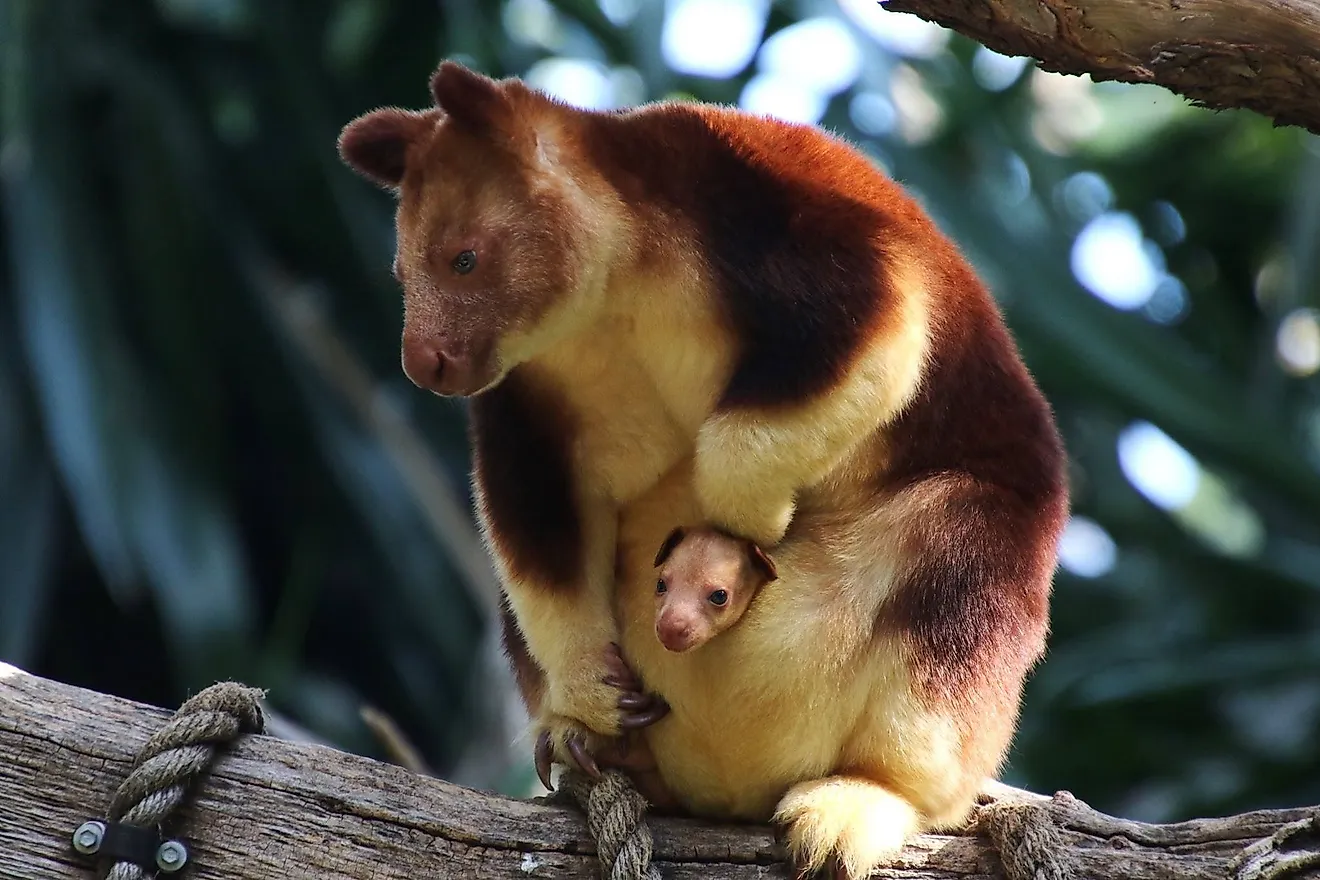
- Arboreal animals are those that spend most of their time on trees.
- The emerald green boa spends much of its time on trees, coiled on branches.
- Orangutan is the largest arboreal mammal on Earth and also considered the most intelligent of all animals that live on trees.
Arboreal animals are those that spend most of their time on trees. These animals usually eat, sleep, and play in tree canopies and only climb down occasionally in search of resources like water or sometimes mate. The arboreal animals have several adaptations that enable them to live on trees. Some species have elongated limbs and prehensile tails that allow them to effectively swing from tree to tree. Others have feet and claws which enable them to grip the branches well. Movement on trees can sometimes be challenging for some animals. However, arboreal animals tend to have a low center of mass which prevents them from toppling as they climb trees. Below are examples of 10 most fascinating animals that spend most of their lifetime on trees.
10. Stick Bug
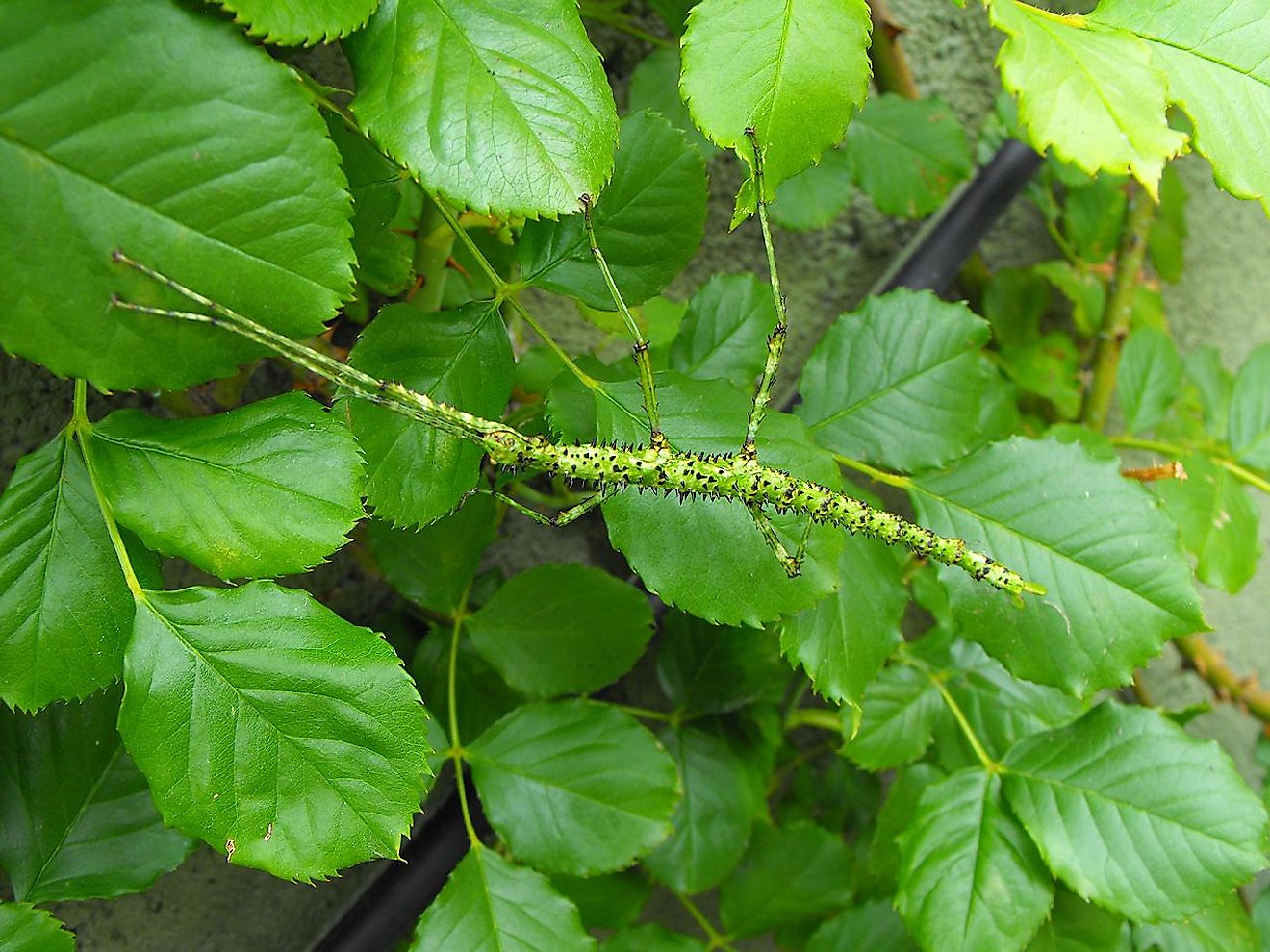
Stick bugs are found in all continents except Antarctica and are most abundant in the tropics and subtropics. These insects are herbivores and can be found on top of tree canopies. Stick bugs resemble the twigs or trees on which they live. The trees provide the insects with an efficient camouflage, enabling them to hide from their predators. Stick bugs also have spine-covered legs which enable them to stick on trees and also act as a defense mechanism against predators. They feed on leaves and are mainly nocturnal, spending much of their day motionless under plants.
9. Tree snail
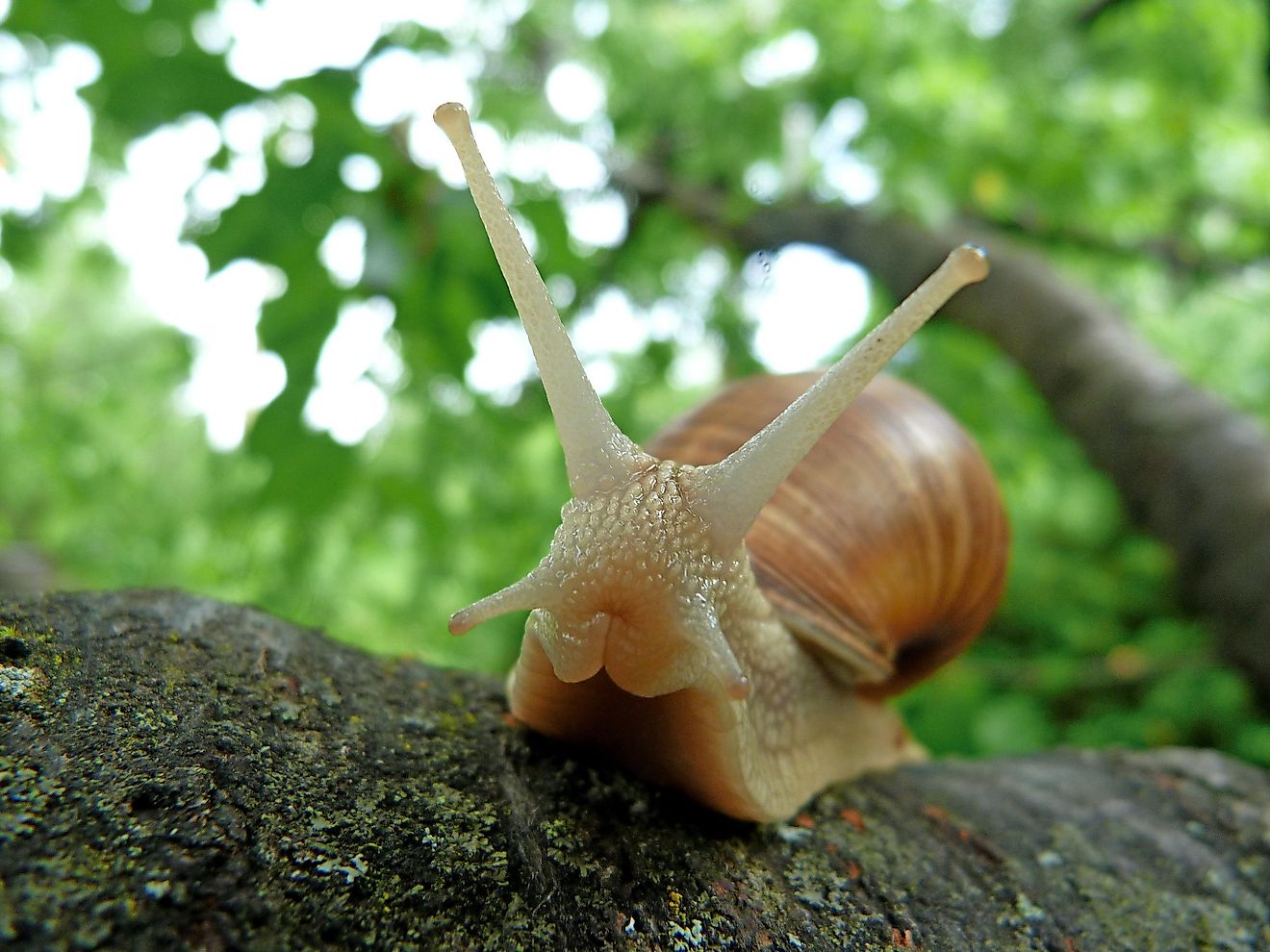
Tree snails are tropical air-breathing species of snails that have shells and live in trees. The name “tree snail” refers to any air-breathing land-dwelling snail that is found on a tree and to any specific species of snail. Mollusk is one of the examples of tree snail. Most of the tree snail species have spiral-shaped shells and eyes that may be confused as antennas. Because they dwell on trees, the species mainly feed on fungus. Their major threat includes human hunting for their beautiful shells and climate change.
8. Spider monkey
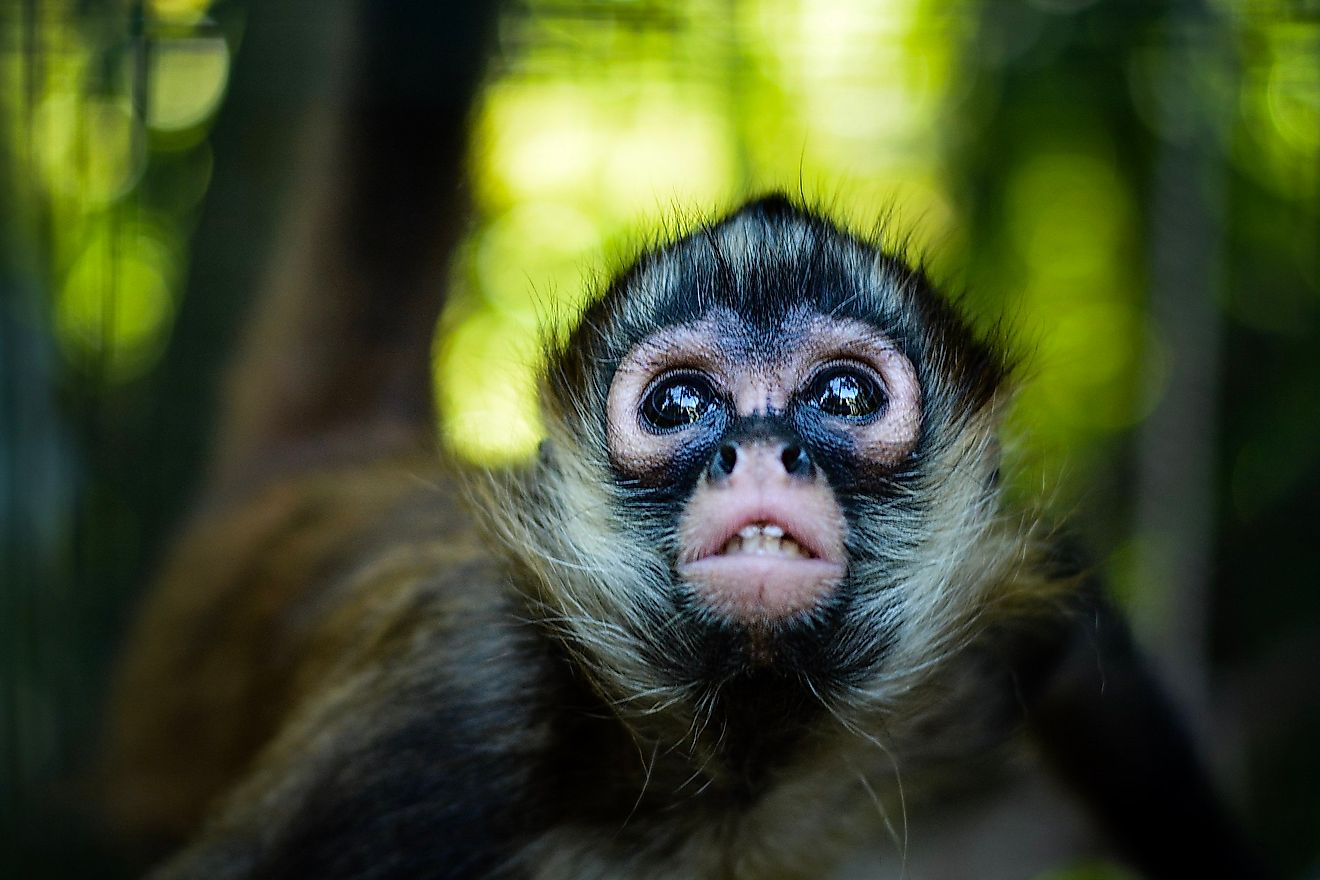
Spider monkeys inhabit the tropical forests of South and Central America. There are seven species of spider monkeys, all of which are under threat. The monkeys are so named because of the way they hand on trees. They use both their limbs and tails to hold different branches of trees at the same time, making them appear as big spiders on trees. The spider monkey is true aerial acrobats, flying through the forests using their long arms and prehensile tails. They spend their night sleeping on selected trees and mostly avoid the upper canopies of trees.
7. Tree kangaroo
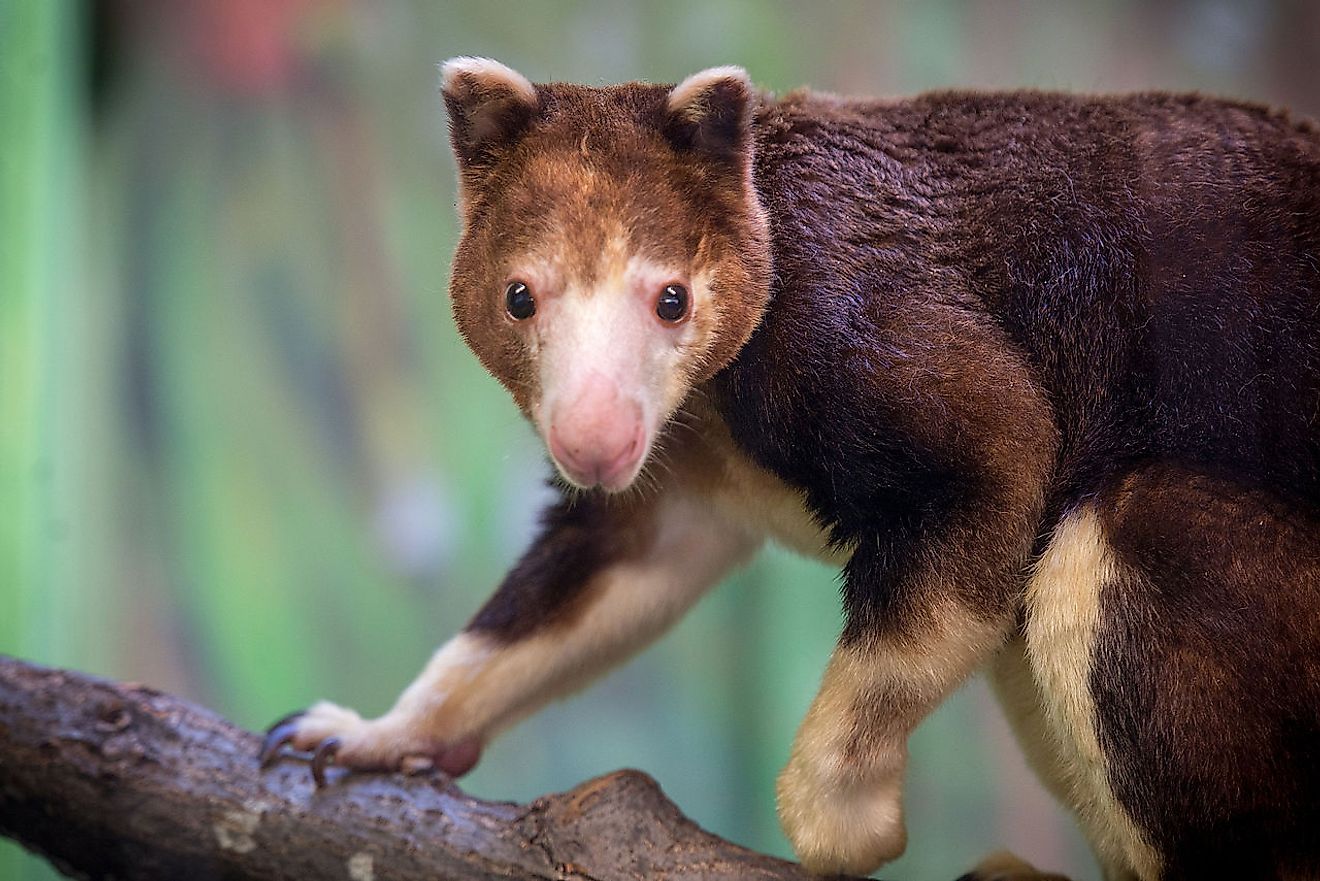
Although most kangaroos spend their time on land, 14 of the species spend most of their life on trees and are collectively known as tree kangaroos. The tree kangaroos are mostly on trees but occasionally climb down when they want to move to another tree. These species feed and sleep in trees, as well as raise their young ones. Unlike “land” kangaroos, tree kangaroos have stronger claws which enable them to move on trees. Their long tails help them to balance as they climb the tree branches. The major threat to these species is the illegal logging and clearing of vegetation for agriculture.
6. Tree Squirrel
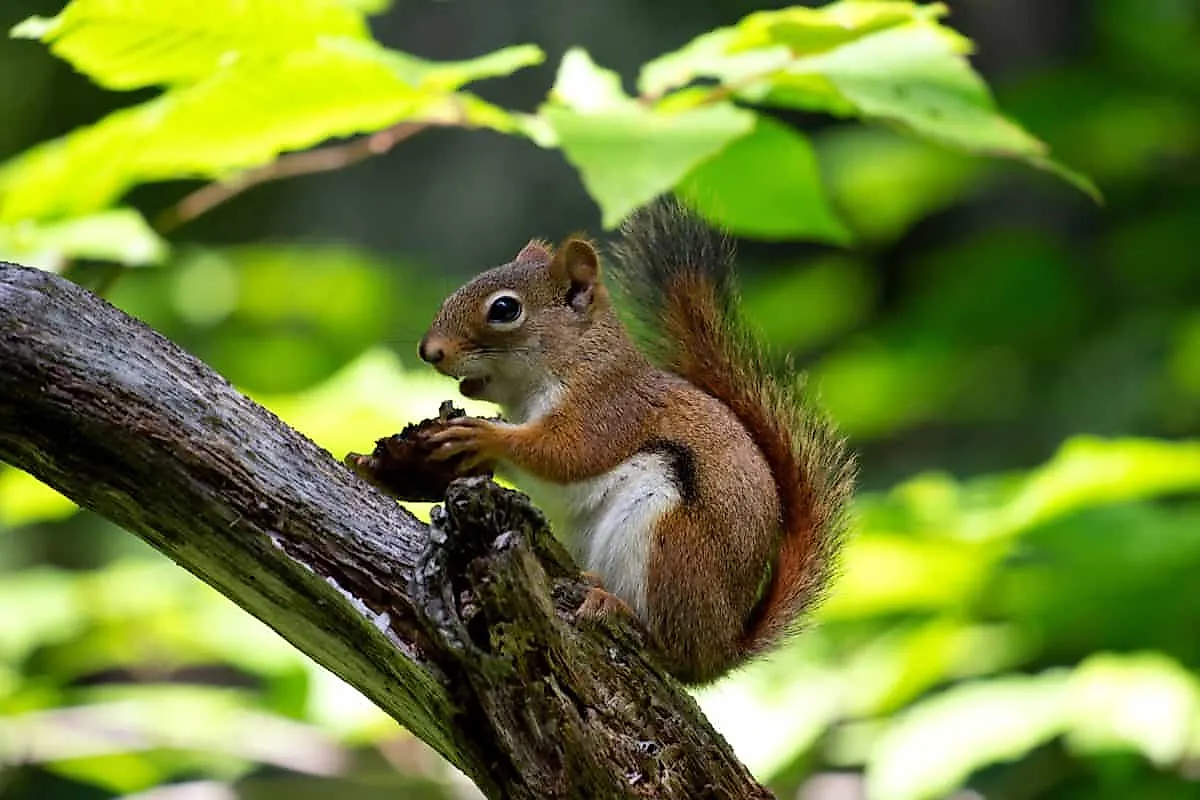
There are over 100 species of tree squirrels on Earth, found in all the continents except Oceania and Antarctica. The species are so named because they are found in trees where they nest and harvest their food. Some of the tree squirrels are the fox squirrel, flying squirrel, pine squirrel, and gray squirrels. Most of these squirrels are active in the morning and evening, climbing up and down the tree. Tree squirrels feed on seeds, corns, fruits, berries, fungi, and bird egg. They may also eat insects, young snakes, and small animals.
5. Green tree python
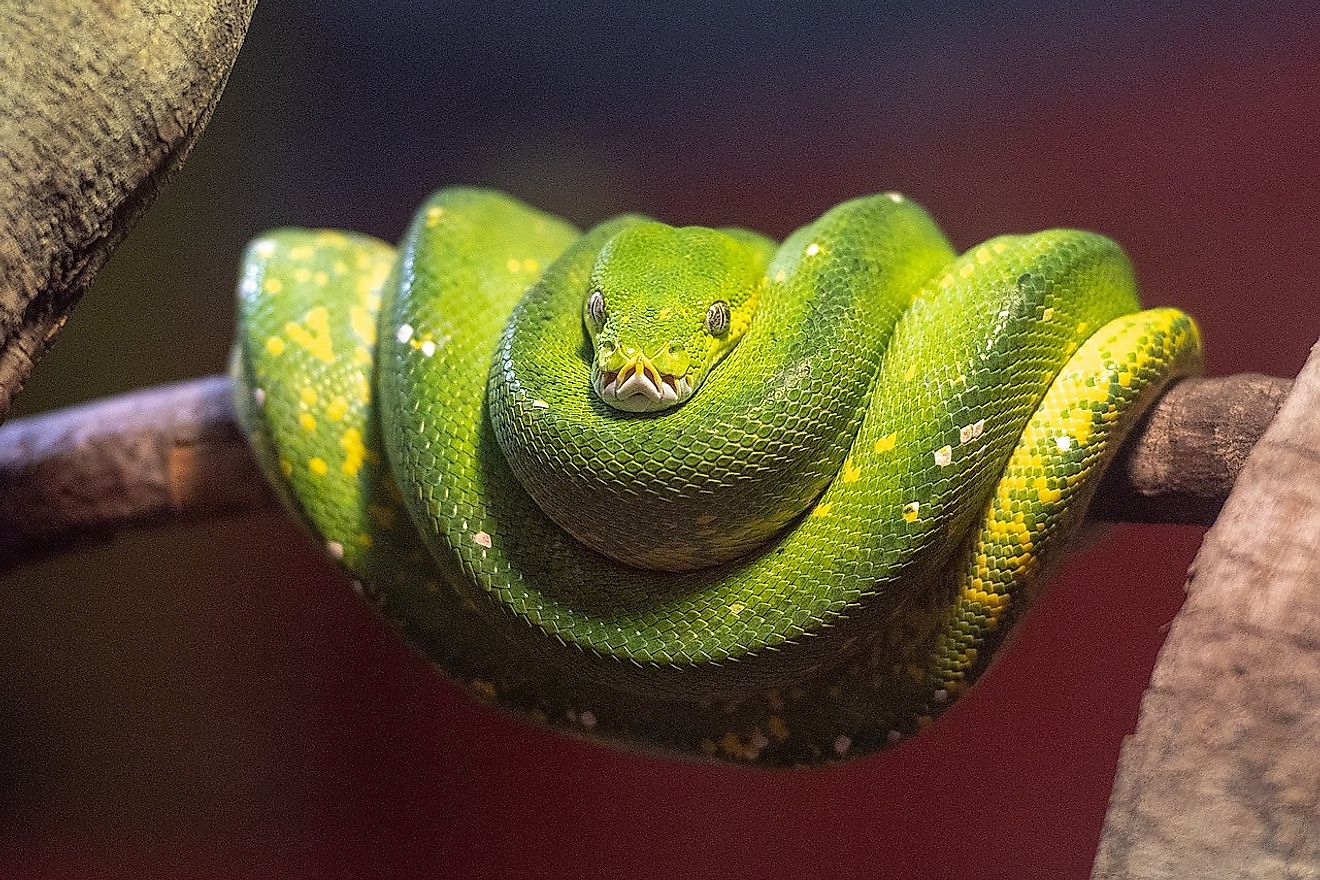
Pythons are some of the largest snakes in the world. There are about 31 species of pythons, one of which is the green tree python commonly found in Indonesia, Papua New Guinea, and Queensland. This species of python is commonly found in bushes, rainforest, and shrubs, away from where people live. The snake spends most of its time on tree branches and only descend to the ground when it wants to move to another tree. It has a slender body and prehensile tail which it uses to grasp or hold objects including tree branches as it moves.
4. Opossum
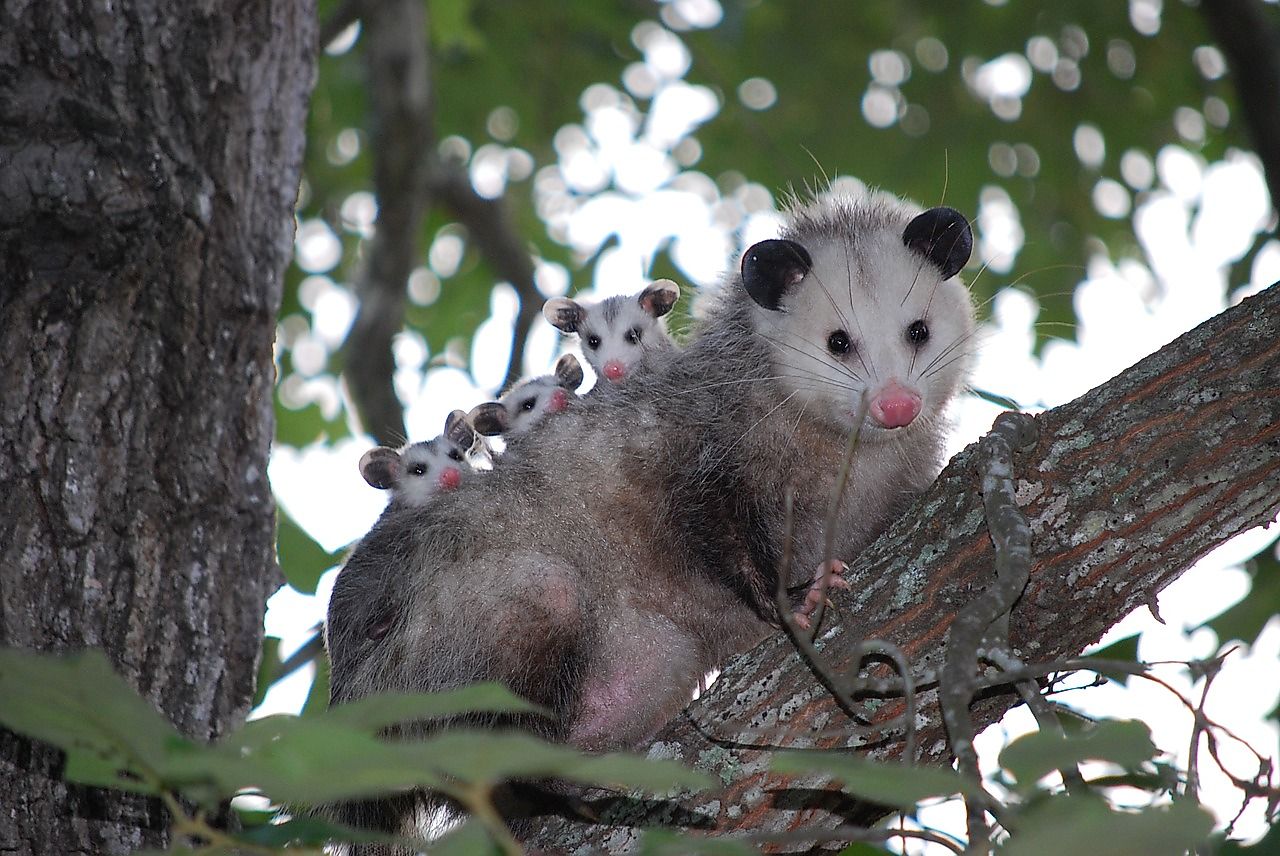
An opossum is a group of marsupials consisting of over 100 species. The species are endemic to the Americas but originated from South America. The most famous characteristics of the opossum are the habit of playing dead, especially in front of a predator and can stay in that position for hours. While playing dead, it emits some strange odor. The species build their nests on trees. They have prehensile tails that are used as extra arms while moving from branch to branch and to hang upside down
3. Sloth
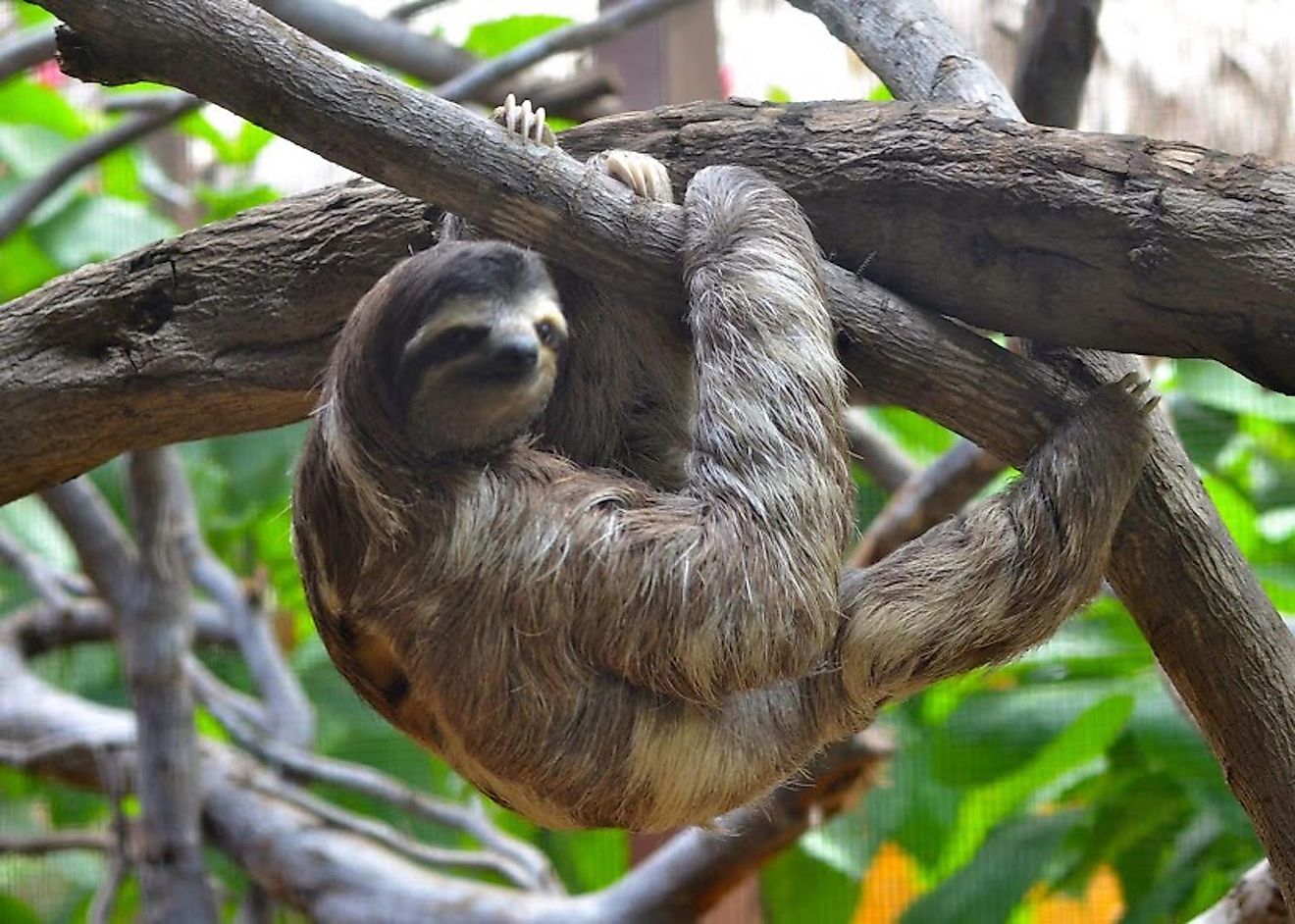
As the name suggests sloths are slow and lazy arboreal mammal so named because of their low rate of metabolism and movement. These species spend approximately 20 hours a day just sleeping. While sleeping, sloths hang upside down from tree branches. They have long feet and hands with curved claws which enable them to comfortably hang on tree branches. They also use their feet and hands to drag themselves on the ground. Sloths only get to the ground once in a week and are almost helpless on the ground but are excellent swimmers.
2. Orangutan
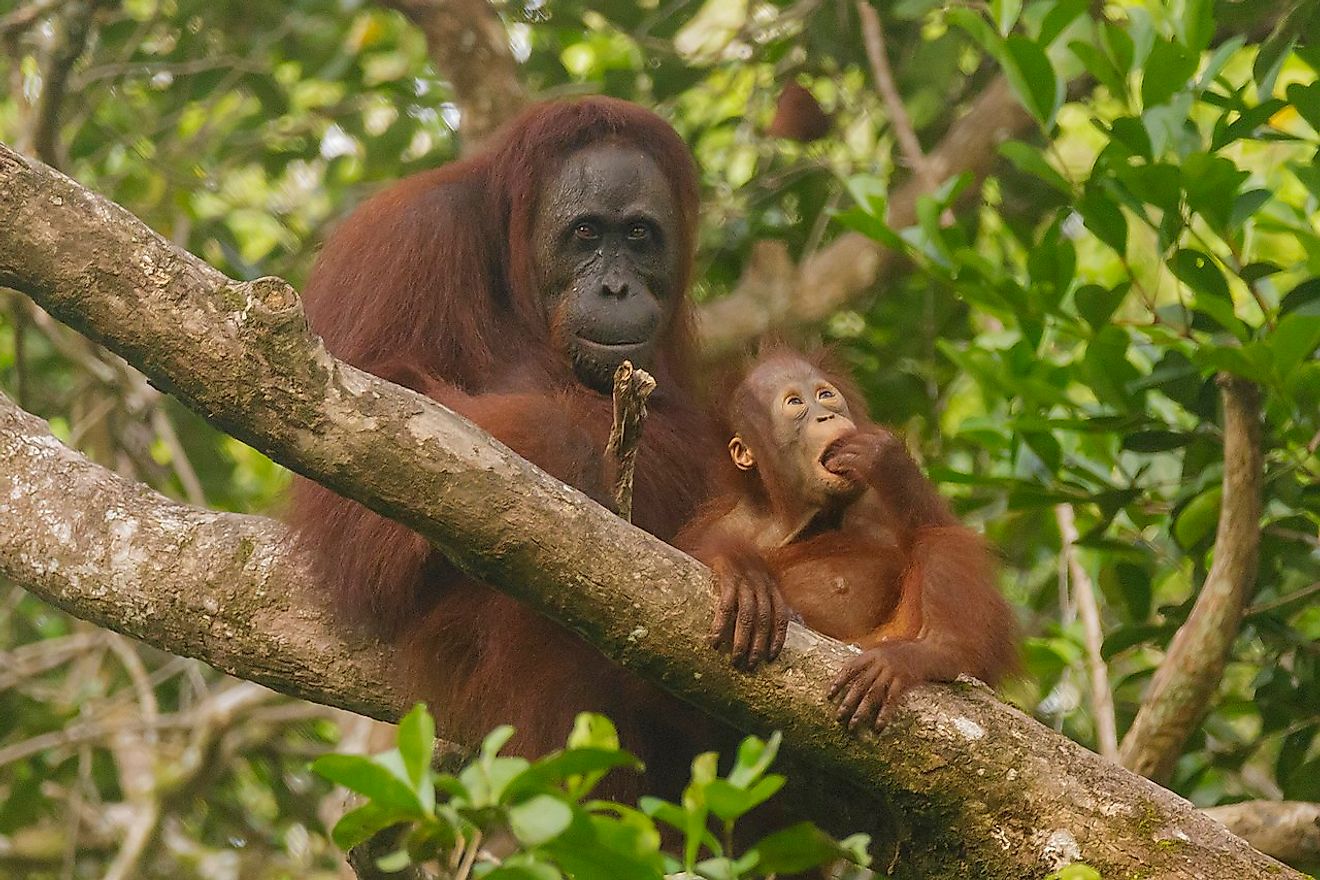
Orangutan is the largest arboreal mammal on Earth and also considered the most intelligent of all animals that live on trees. These primates are commonly found in forests in Sumatra and Borneo and spend their day jumping from one tree to the other. Orangutans build their nest at the top of the tree where their sleep and also raise their young ones. Their long arms, which can reach a length of 7 feet enable them to firmly grab tree branches as they swing from one tree to the other. They also have flexible limbs and their shoulder and hip joints allow them to a greater range of motion than other apes.
1. Emerald Tree Boa
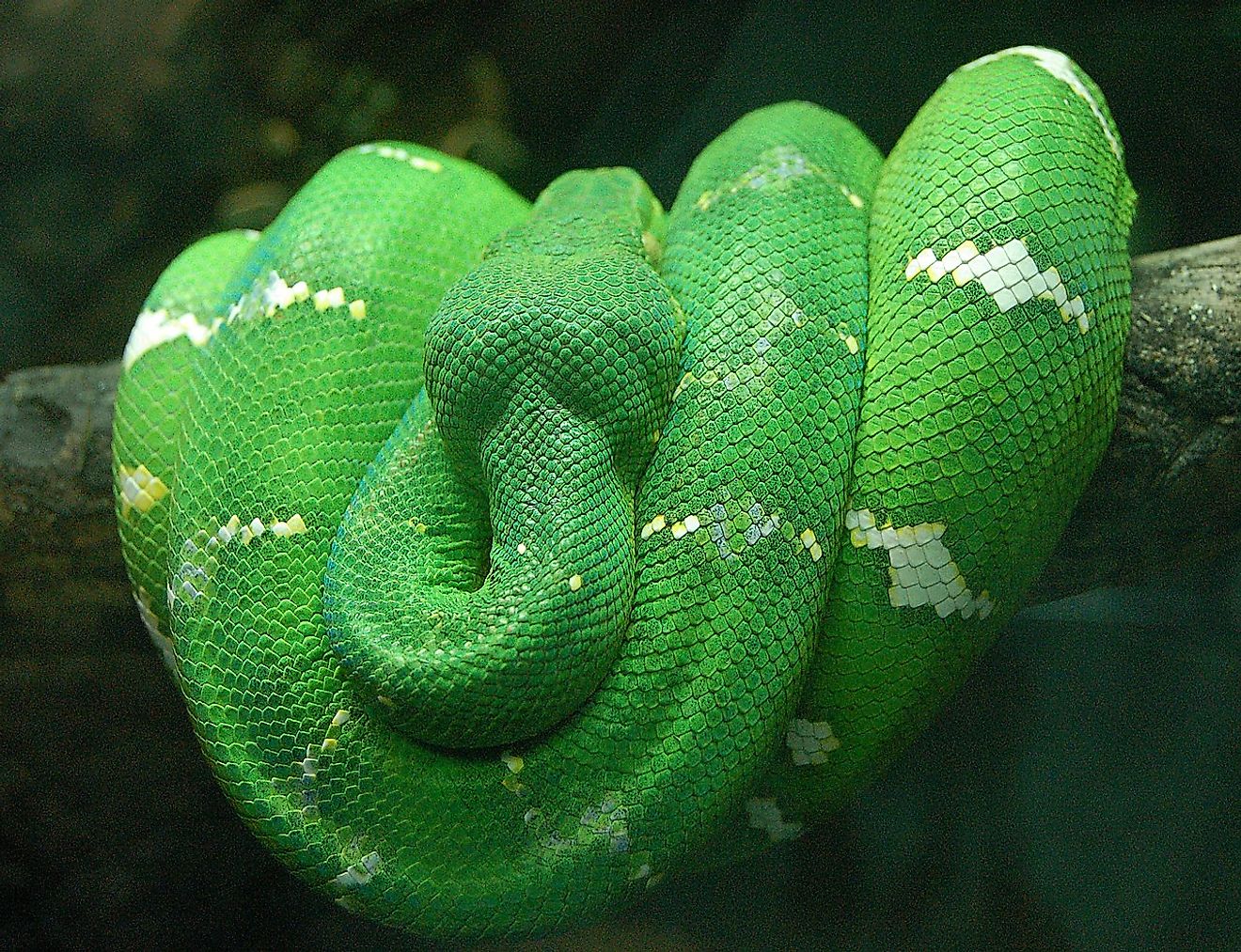
Emerald tree boa is a boa species that inhabit the rainforests of South America. The species can grow to a length of 6 feet. It is named after the emerald green color pattern on the body. The emerald green color is interrupted by white zigzag stripes while the underpart is white. The emerald green boa spends much of its time on trees, coiled on branches. It feeds mainly on small mammals, birds, and lizards. It has an extremely slow metabolism compared to the ground species.











